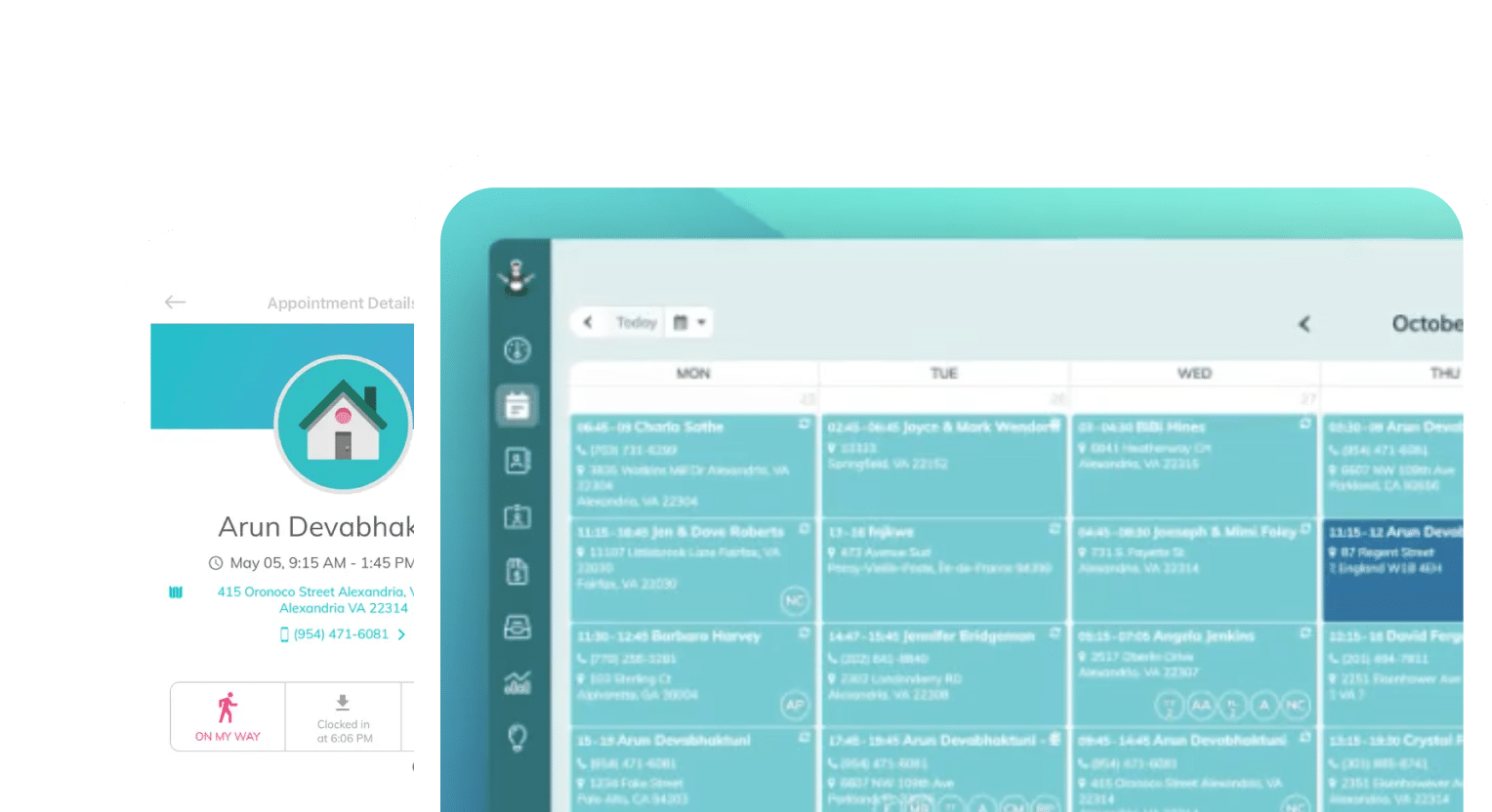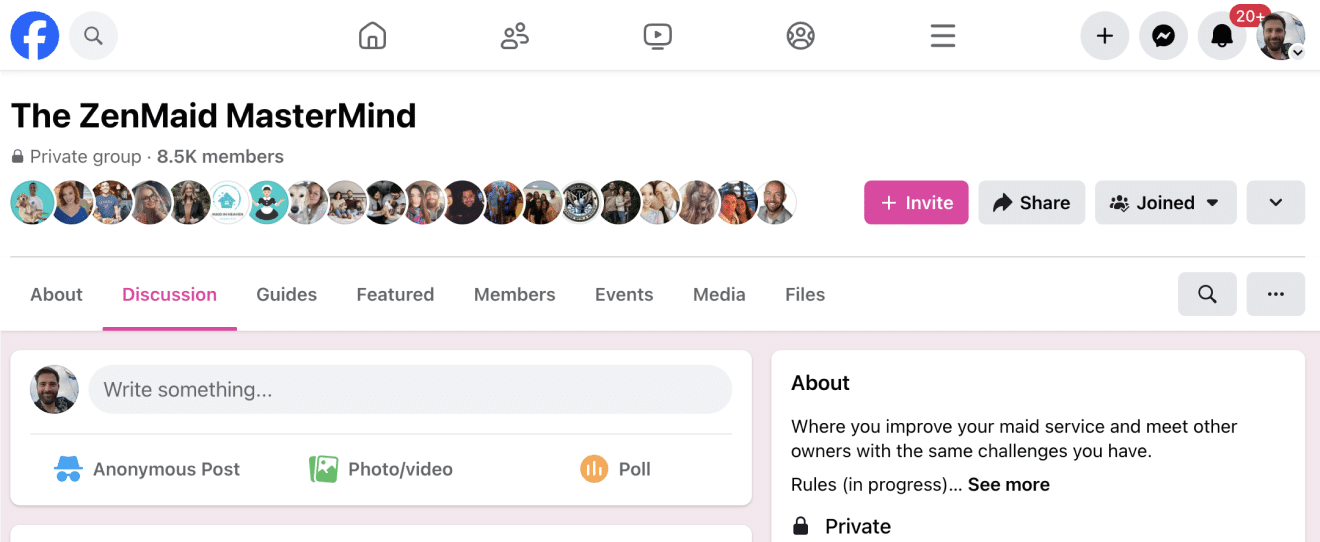Your employees are the lifeblood of your cleaning business. As your maid service grows, it becomes more and more important to hire and retain employees who will grow with you and become a part of your company long term.
There are tons of strategies on how to hire good cleaners and office staff. But what happens after you’ve hired your team? As a maid service owner, you need to learn how to be a good manager and even better leader to set your team up for success and make sure that they are supported in their roles.
As a leader, you might find yourself asking, “why don’t my employees just do what I want them to do?”
Often, it might seem like your employees are doing things wrong, or they aren’t listening to what you say. When this happens, it’s essential to observe your management style to identify where there are gaps and find new ways to train your team.
In this post, we’ll go over management strategies that will help you determine why your employee performance is low and how to set more explicit expectations and find solutions to these problems. Addressing these issues will increase your employee’s performance and help them feel more supported within your company.
Table of contents
Set expectations
You can’t determine why someone isn’t doing what they’re supposed to if there is nothing to measure their performance against. It might be easy for you to see a problem, but if you haven’t set a clear expectation with your employee, it’s doubtful that they know what you expect from them. After all, they can’t read your mind.
When setting expectations, you need to be clear, observable, and demonstrate the behavior you seek from them. This will show them exactly what you mean when you tell them to do something. When they can observe you doing something, or have an explicit set of instructions to follow, then it takes a lot of the guesswork out of the task.
Setting expectations can look a few different ways. It can take a hands-on approach where the employee shadows you and takes notes. Or it can be as simple as creating checklists for them to follow.
Assess your employees understanding of a task
Once you’ve set an expectation, and your employee has been able to observe a task in action, it’s time for you to watch them doing the task. This will allow you to access their skills and provide actionable feedback that they can use to improve. You can ask other staff members in key positions or team members who excel at this task to observe and offer any suggestions or additional training.
For some tasks, it might be beneficial to have the employee write down all of the steps they’ve learned on a sheet of paper. This will show you how much they remember from what they’ve learned and highlight if they are missing any steps.
Then, sit down with them to talk more in-depth about what they just learned, have them ask any questions, and ask them questions in return to test their proper understanding of the process.
Give clear and actionable feedback
When making a new hire, Tamara recommends doing a daily evaluation for the first ten days of employment. Let them know that as part of your onboarding process, you will meet with them every day for ten days to talk about their performance and give feedback.
This makes it so that they know to expect a lot of feedback from you and makes it less scary for them when you ask to speak with them about their performance down the line. Having regular meetings like this early on in the relationship will help you to set proper expectations. It will give you a better understanding of what their skills are and what might need additional improvement.
If, after ten days, you’re not noticing any improvement based on the feedback you’ve given, then that might indicate that they are not a good fit and may not be able to meet your expectations in the future.
Provide regular and constructive feedback so that when those hard conversations come along, you have a frame of reference for their work history, and they are not blindsided
Understand why they are not meeting your expectations
There is always an underlying reason as to why your expectations aren’t being met. These reasons might not always be clear or easy to fix, but it’s important to understand them to figure out how to take the next steps. Here are a few reasons why an employee’s performance might be suffering.
They don’t know how to do the task
If you don’t have clearly outlined steps for doing tasks, the employee can’t know the exact way you want it done. This can be easily solved by creating documented systems and processes that your employee can refer to when they don’t know how to do something.
They haven’t received enough feedback
If you don’t give proper feedback or course-correct, then your employee might not even know they’re doing something wrong. You need to provide consistent feedback so that they’ll learn from their mistakes and find ways to improve on them.
When you give employees encouragement and positive affirmation, they will feel more compelled to do a better job and will also feel happier and more supported in their roles.
They can not do the job
If you’ve set expectations and given necessary feedback, and they are still doing things wrong, they might just be unable to do the job. Sometimes, the job is too physically demanding. Sometimes they are trying their best, but are not detail-oriented enough to follow directions and meet the minimum expectations.
Regardless of the reason, you need to identify early on if the performance issues are due to a lack of training or just because the employee cannot do the job.
They make a choice
In some cases, poor performance has nothing to do with a lack of training or skills. Some employees might decide that they don’t like the job they’re doing or it’s not something they enjoy.
Whether or not they realize it, this apathy or lack of interest in the role can translate to poor job performance. For some employees, this role is just a placeholder job for them. They will never be fully committed to improving because they are actively looking for something else.
Alternatively, some hires might have a problem with authority or might not like working with the rest of your team members. These are all choices the employee makes that affect their performance, and that no amount of training will change.
Identify who owns the problem
When you notice an employee performing poorly, it’s important to identify who owns this problem.
Is poor performance due to the employee being under-trained or unsupported? It’s your job as a leader to set expectations, train the employees, and give feedback. It’s up to you to decide if you feel that you need to invest more time into training them, or if they don’t think that more training will help them improve.
Sometimes, no matter how much training and support you give an employee, they are just not equipped to do the job at hand. It might not be the right type of role for their personality or their physical abilities.
In some cases, the employee might be going through personal issues that can be impacting their performance. You can have a meeting with the employee to try and get a better understanding of what is going on.
In this meeting, try to be open-minded and curious by asking them how they feel about the job, if it aligns with their goals, or if there is something else going in their life that is affecting their work.
Sometimes if it is a personal issue, giving them a few days off might help them come back to work with a clear head. Sometimes, they are just not invested in the job, or they don’t like the work.
These conversations can reveal the real cause of the performance issues and help you make a better decision as to how to address them.
Dignified termination
If you’ve given an employee multiple chances to improve their performance and still don’t see any changes, then it might be time to decide to end the relationship.
Keeping employees who are not meeting their minimum performance requirements can hurt your company and demoralize your other staff members who meet or even exceed your expectations.
Before deciding to terminate a team member, make sure that you have given them a proper warning in the form of a verbal conversation about their performance as well as a written notice.
This is to let them know that if their performance does not improve, they will be subject to disciplinary action, including termination.
It’s important always to give them a chance to do better and prove that they can improve before making the final decision. If they’re still unable to meet your expectations, it’s time to decide to terminate them as an employee.
When letting them go, make sure to do it with respect and dignity. Your whole team is watching how you treat your employees. If you mistreat one person, then everyone will notice, and it can affect the morale in the company.
Be as gracious as possible in thanking them for their time and let them know that it is not a reflection of them as an individual. Instead, they are just not the right for this job, and are better suited in a role that is more in line with their skills.
Final Thoughts
Remember that your success as a business is very determinant of your employee’s success within your maid service. It’s important to give your team the right tools and provide them with the right leadership that they need to be successful. Their success within your maid service will impact the growth and success of your business as a whole.
Having high expectations of your employees also means putting in the necessary effort to train them, provide feedback, and help them improve. It might seem like a lot of work, but it’s a crucial part of creating a successful cleaning business.
About the presenter
Tamara Ard is the founder and co-owner of My Amazing Maid. She’s started and operated two non-profit international training organizations, as well as two home services businesses. This post will highlight her systems for identifying and improving employee performance and her strategies for training and retaining the right employees for your maid service.
This talk first aired at the 2020 Maid Service Success Summit.
The Maid Summit is an annual online event that brings together the most successful leaders in the cleaning industry, like Debbie Sardone, Angela Brown, Courtney Wisely, Amy Caris, Chris Schwab and more. Get free access to masterclasses and workshops that will help you to grow, scale and automate your cleaning business so you can get more leads and create more profit. Make sure you’re on our email list to find out how to get free tickets to the next event.
If you found this article helpful, check out these ones:
- Stop Overpaying: How to Save $10K+ a Year in Your Cleaning Business
- How One Cleaning Tech Employee Becomes Irreplaceable
- What I Wish I Had in Place *Before* My First Nightmare Client
- The Divorced, Broke, and Fearless Journey to Six-Figure Vacation Rental Success
- How a 20-Year Cleaning Business *Drastically* Increased Revenue by Ditching Pen and Paper

 Frustrated with your scheduling? Try the easiest-to-use calendar app, made by and for maid service owners.
Frustrated with your scheduling? Try the easiest-to-use calendar app, made by and for maid service owners.










